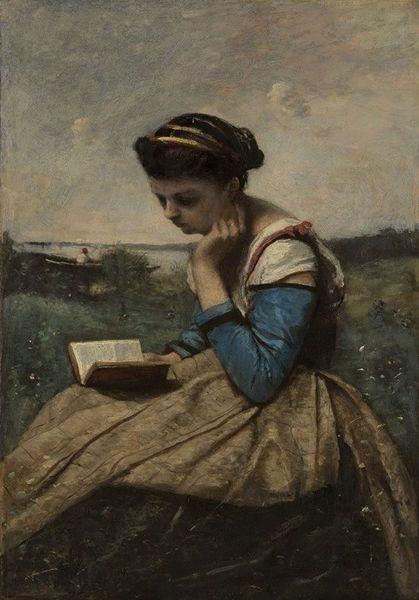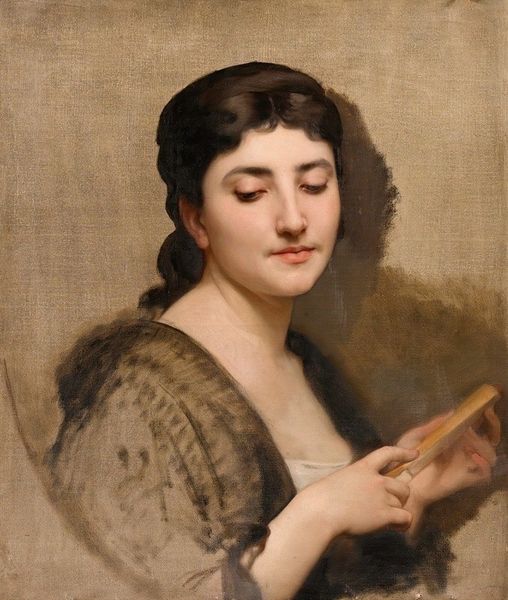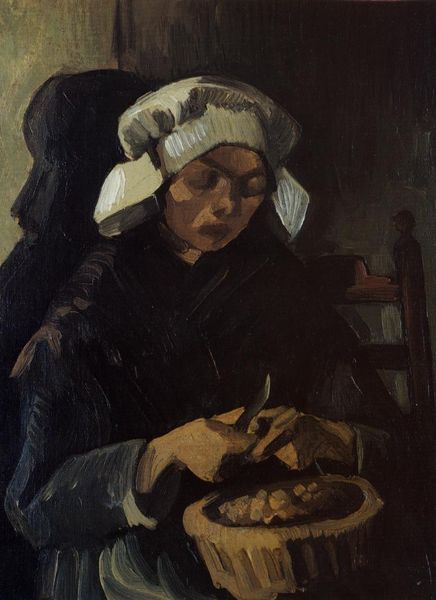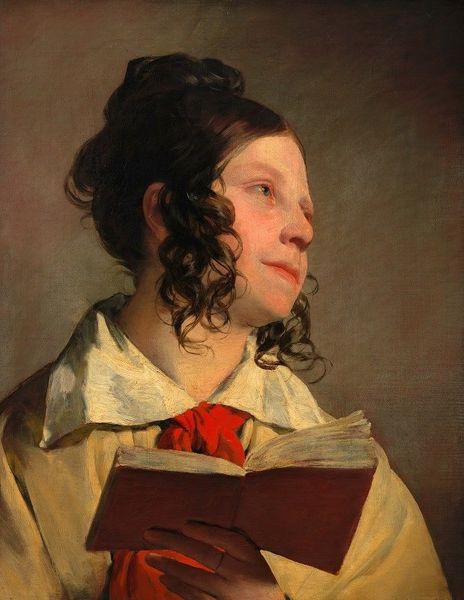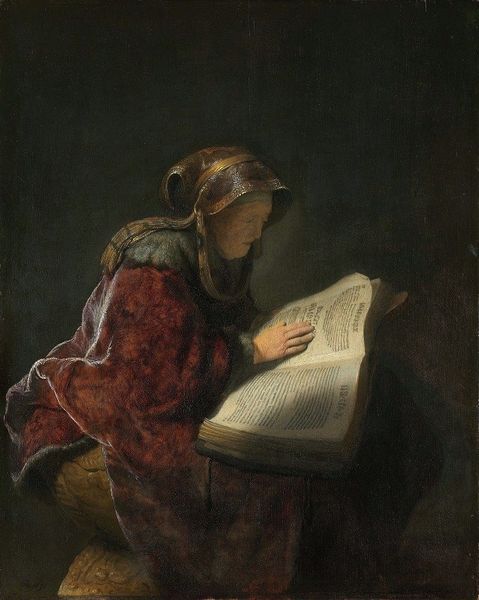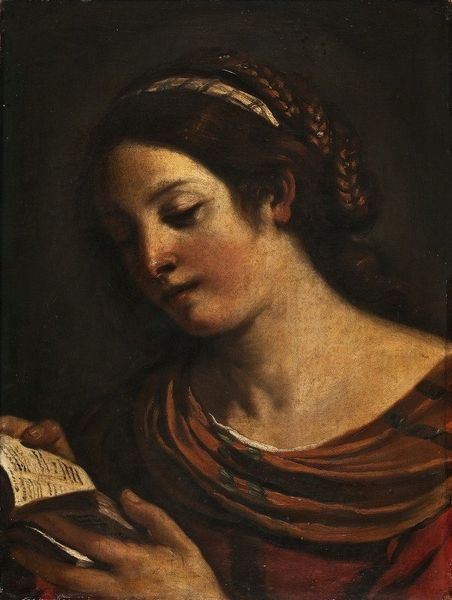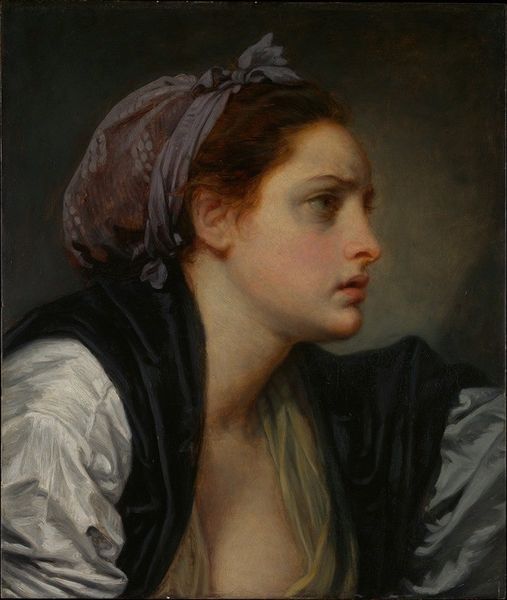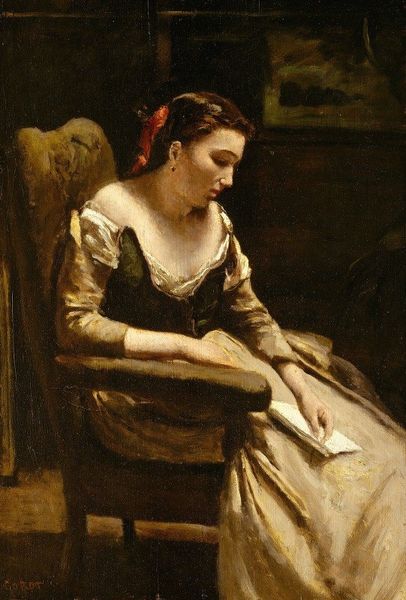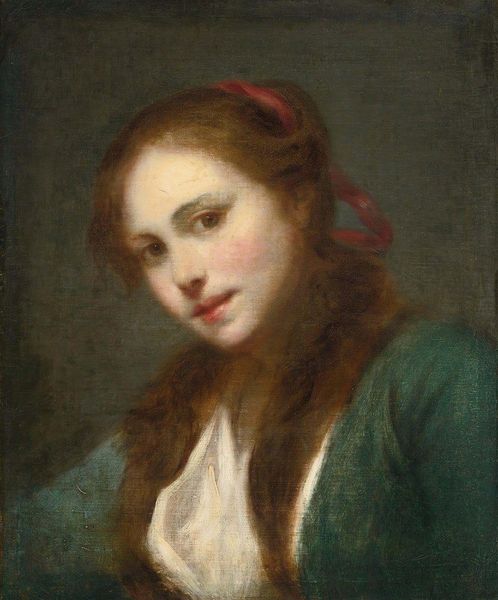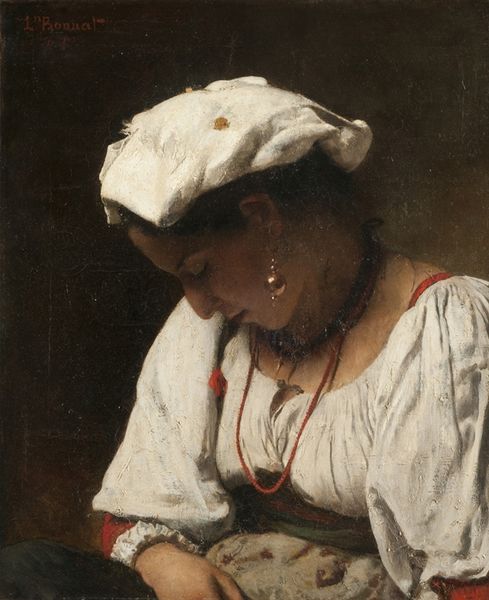
painting, oil-paint
#
portrait
#
figurative
#
baroque
#
painting
#
oil-paint
#
genre-painting
#
portrait art
Copyright: Public Domain: Artvee
Curator: This is Velázquez’s “The Needlewoman,” dating from around 1640 to 1650, created with oil paint. What strikes you about it initially? Editor: A hushed intimacy, wouldn't you say? The low light almost seems to whisper secrets around her. And her complete absorption – what a magnetic pull. Curator: Absolutely. What’s so interesting is how Velázquez elevates a seemingly ordinary act of needlework. Notice how the texture of the fabric in her hands receives the same level of attention as her face? It acknowledges the labor involved in creation and domesticity. Editor: Exactly! It's a quiet act of rebellion, showcasing the dignity of everyday toil through each visible stitch. Makes me wonder, what kind of future she imagines with each meticulous pass of the thread. Is she repairing something broken, or perhaps building a new beginning for herself? Curator: The rendering of her hands speaks volumes, right? These hands aren't idle; they're engaged in a process, contributing to the material world around her, pushing back against this history where labor is so often overlooked. Editor: It reminds me of my grandmother. Lost in a world of patterns and fabrics, each completed project felt like a small victory against the chaos. It feels intensely personal to the maker. The very act of creating becomes a meditation of sorts, almost like a whispered mantra. Curator: And speaking of the artist’s hand, look at his economical use of brushstrokes. The lack of heavy detail almost hints at a mass production logic. There is an accessibility. It's a portrait of labor that feels timeless in its recognition. Editor: Absolutely. He is using the very materiality of his paints to capture the physical reality of work, while somehow still tapping into the emotional truth of those quiet, focused moments of creativity. This makes you pause, and remember all the quiet artists creating their worlds, one stitch at a time. Curator: It reminds us about value: that the work, material, and emotional are there, they matter, no matter who does it. Editor: Yes, a portrait about work ethic in which the final work might become irrelevant – it´s about the journey and labor. A gentle whisper about purpose, and maybe a little bit of rebellion.
Comments
No comments
Be the first to comment and join the conversation on the ultimate creative platform.



